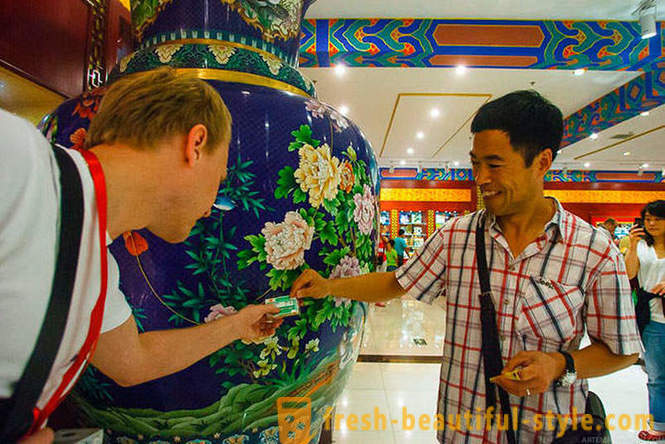Beijing cloisonne
• Beijing cloisonne
Beijing (Beydzhinskaya) cloisonne, or "Jintao Lan" - one of the traditional opulence of Chinese culture. Made in this technique the product has always been a sign of wealth and high social status, and served as the Chinese emperors palace and temple utensils, household items.
Today we will visit the factory, cloisonne, located in a suburb of Beijing, and see how to create these unique products.
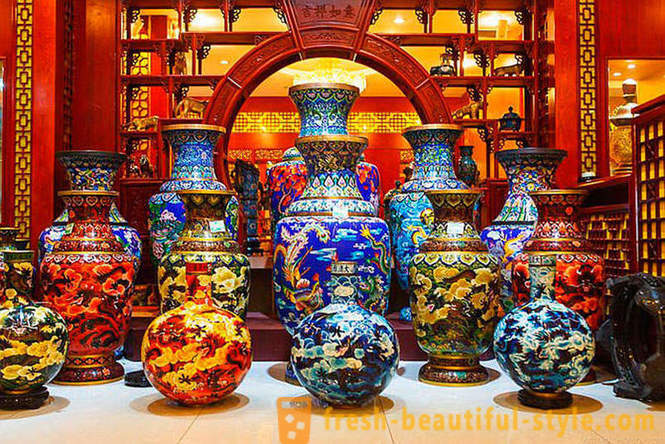
The art of cloisonne enamel originated in ancient Egypt, later spread to Byzantium and the Middle East. During the reign of China's Mongolian Yuan dynasty (1271-1368) Technology cloisonne came from Turkey to China, which has developed considerably and was perfected in later periods of the Ming Dynasty (1368-1644) and Qing (1644-1911).
The name "Jintao Lan", which translates as "Lazur Jintao," due to the fact that it was during the reign of Jingtang (1450-1456) in Beijing workshops the most established mass production of cloisonne enamel. The main color was blue, it is lapis lazuli.
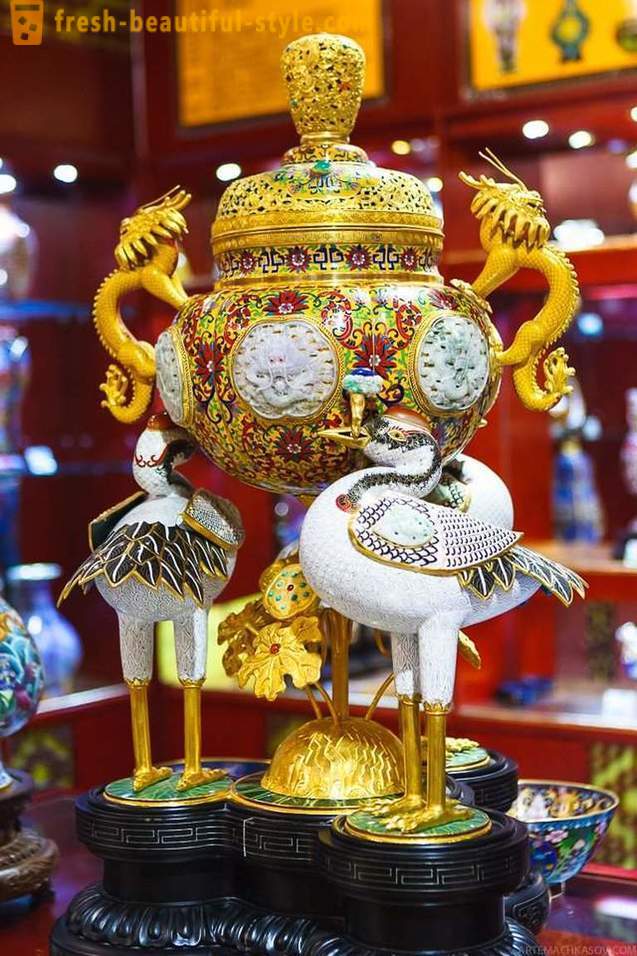
For hundreds of years, most developed precisely Beijing enamel technique, which is not surprising - after all located in Beijing Imperial "Forbidden City" was the main place for the use of these products. Due to the high value and special status, afford products cloisonne could only the rich and close to the emperor the people, in addition lived in the Imperial Palace.
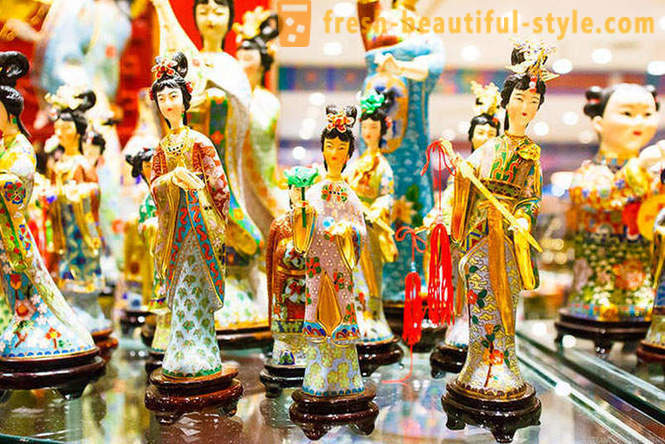
In the twentieth century, over the years the development of technology and the increasing demand, increased significantly and the number of specialists in enamel opened new production. Once inaccessible to most products of cloisonne is now still very expensive, but still much more affordable than in imperial times.
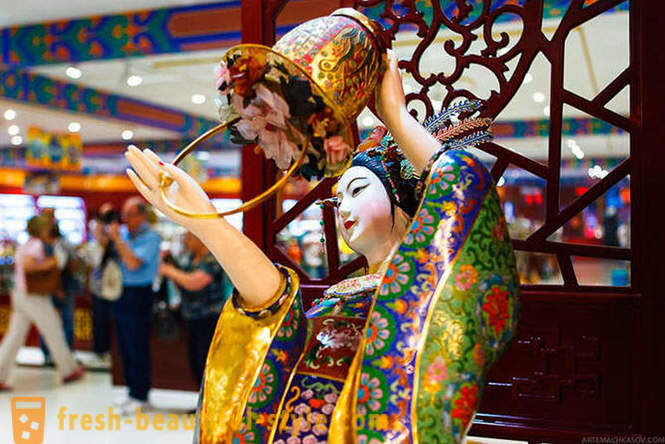
The high cost of enamelled products due to almost total absence of mechanized operations - each piece is handmade and unique.
The first thing, of thin sheets of copper or brass (in the most expensive product, is used instead of copper silver or gold) forged billet:
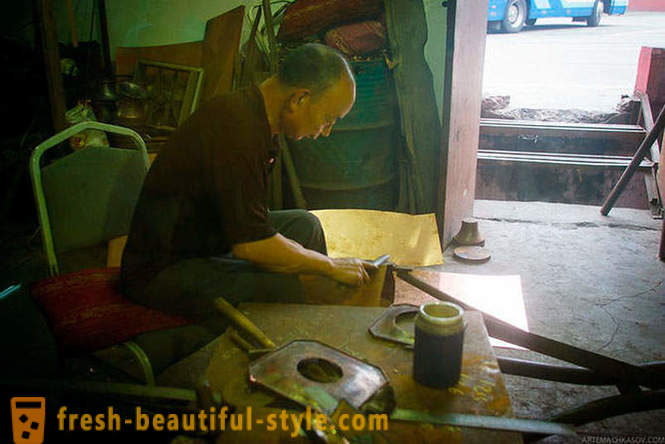
Clutching the sheet to the cast-iron ingot, light hammer blows of the master gives the product its original shape. After which the product passes initial grinding to remove all burrs and irregularities:
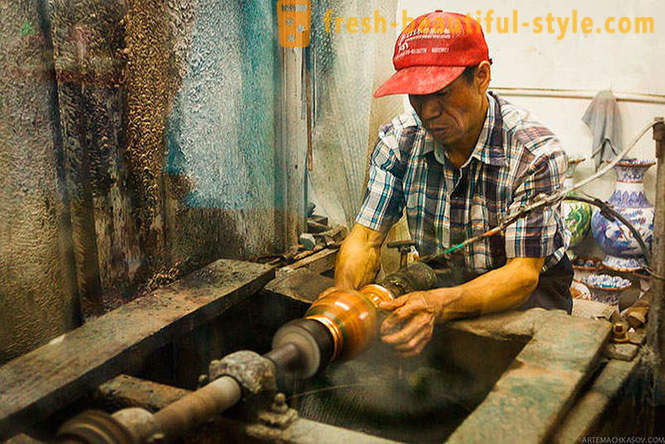
Then the workpiece is applied to a complex pattern, according to pre-established-tissue pattern.
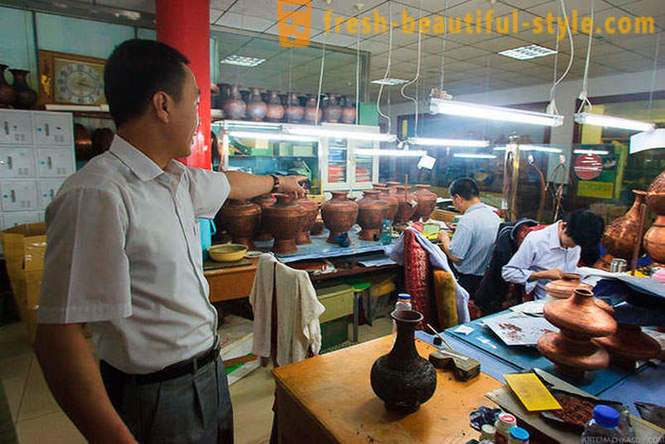
Then comes the time of drawing boundaries, the very walls (hence the name - "cloisonne"). The partitions are made from thin copper or brass tape width from 1 to 3 mm. Master wire cuts into pieces, and then bends it in the form of pattern elements:
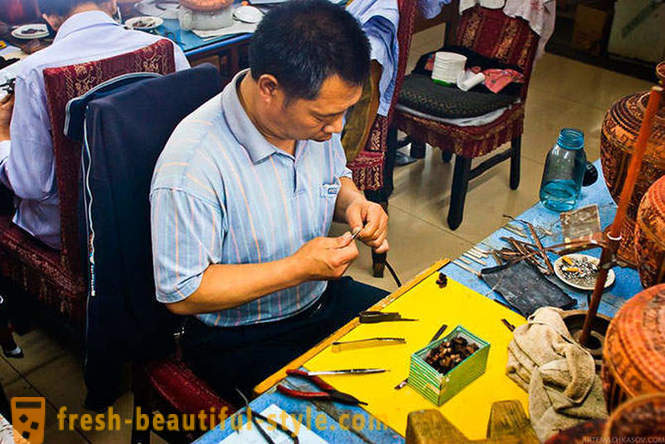
Each partition is carefully attached to the product with a special adhesive:
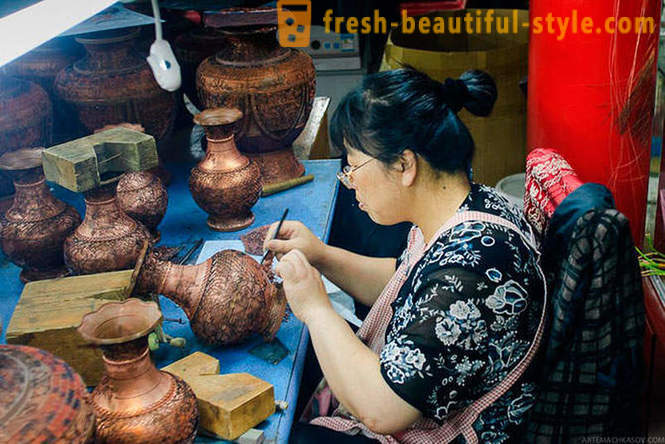
Each of the vase walls - hundreds:

Cloisonné enamel - labor-intensive and complex enamel technique that can not be mechanized. Given the complexity of the pattern, it is difficult to imagine consuming and laborious the process.

When the base pattern is created, the product falls down soldering of carefully crushed, ideally, silver filings:

After that, the product is sent into the furnace. In the firing process, the adhesive is burned, and the solder is evenly distributed over the surface, securely fixing the septum.
Then the time comes to coloring. This operation is also performed manually:
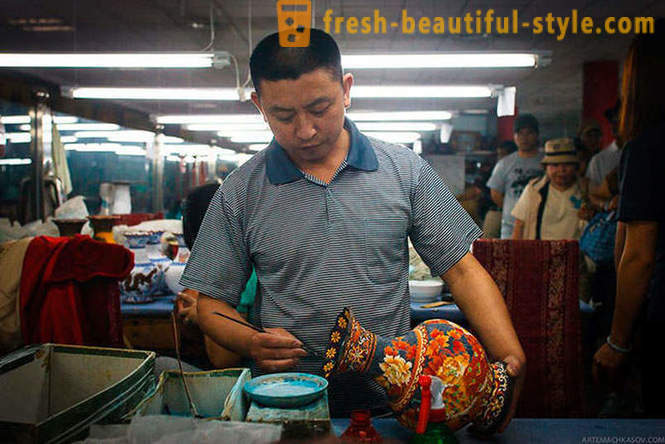
cells between the partitions with special pipettes are filled with enamel powdered glass mixed with various minerals. For mixed colors, cells need to fill in for 3-4. Depending on the complexity of the pattern and intensity of colors, the process of "coloring" can take up to 6-8 hours:
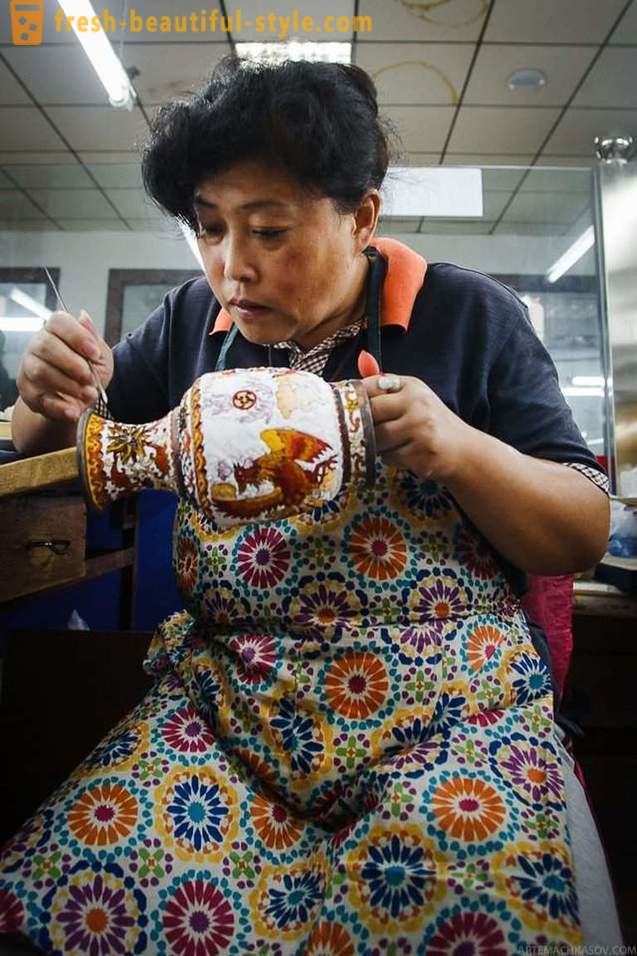
Upon completion of filling the space between the partitions, products are subjected to repeated firing coal in a furnace for 10 minutes at a temperature of 600-700 degrees Celsius. Since the enamel shrinks during baking, roasting and repeated application is necessary several times:
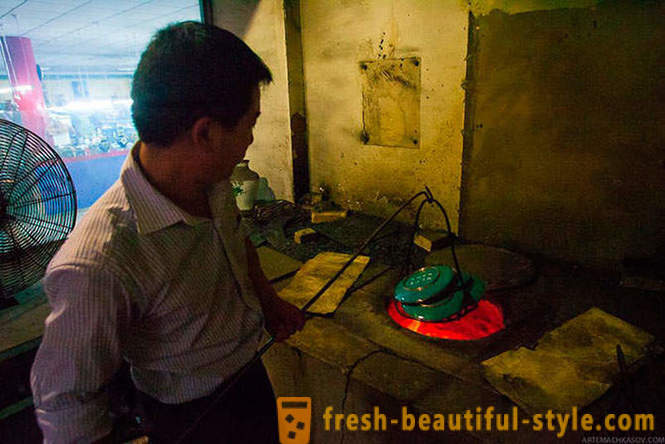
Wizard inspects the resulting products after firing. Almost ready!
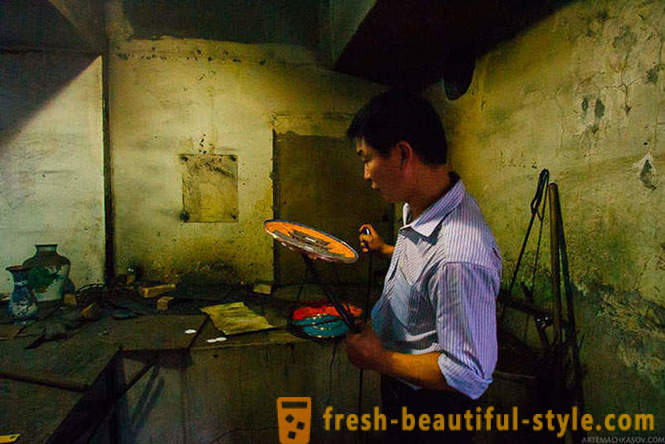
After firing the product is directed to polishing - to remove all irregularities.
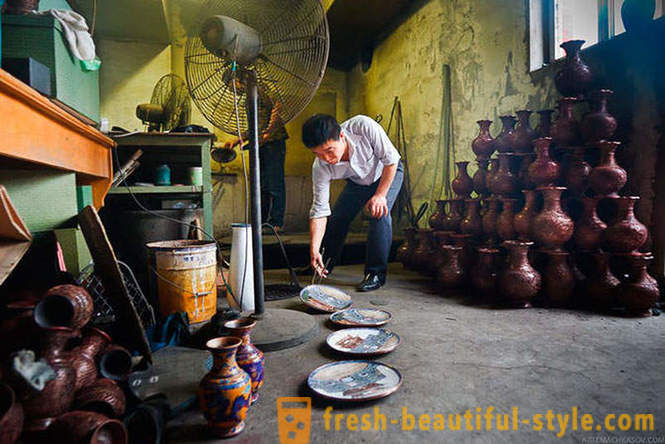
The first polishing step is carried out by means of carborundum (silicon carbide) with water, the second - Coal dust mixed with oil. Free of enamel faces sometimes covered with precious metal - gold or silver.
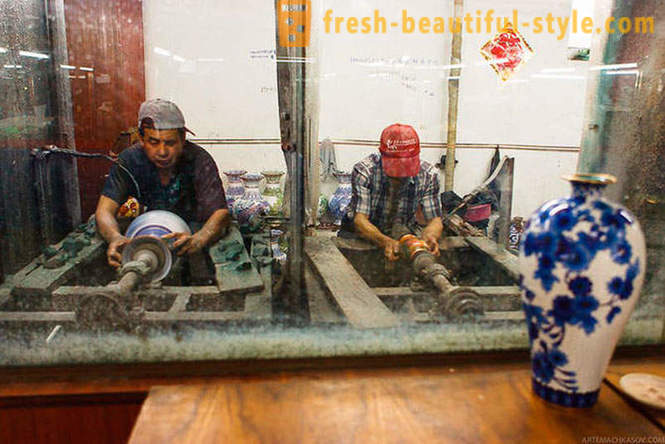
After the application should be the final polishing, and the finished product is sent directly to the location of the store immediately.
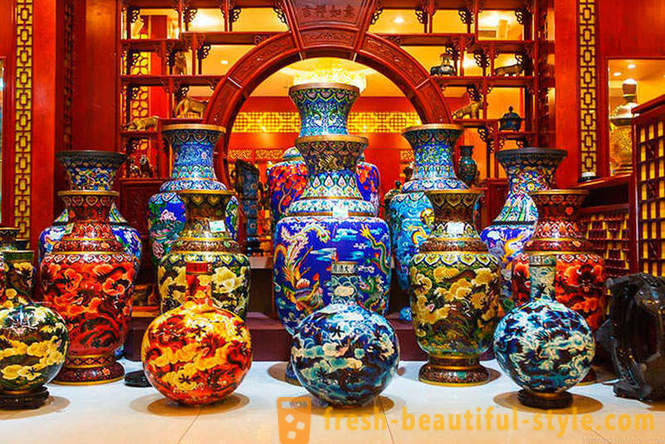
Full, without depressions, filling cells is the hallmark of enamel cloisonne. For products made in the technique of "Jintao Lan", the most typical of a natural ornament with images of animals and birds:
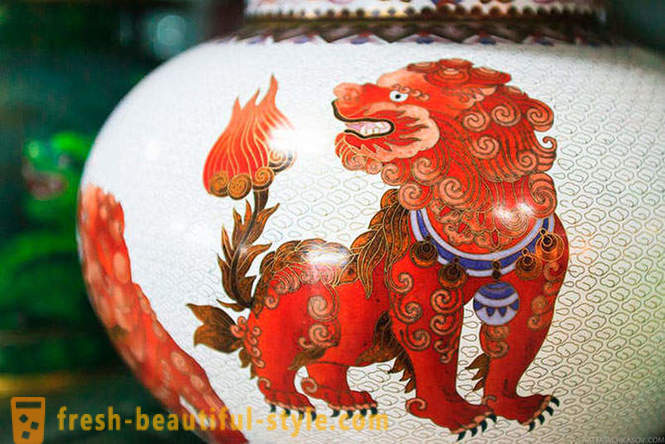
In the words of Zhao Shao, a connoisseur of art era of the Ming Dynasty, "Only women can afford to enjoy these masterpieces in the economy, the true noble man sees only the object of admiration in them."
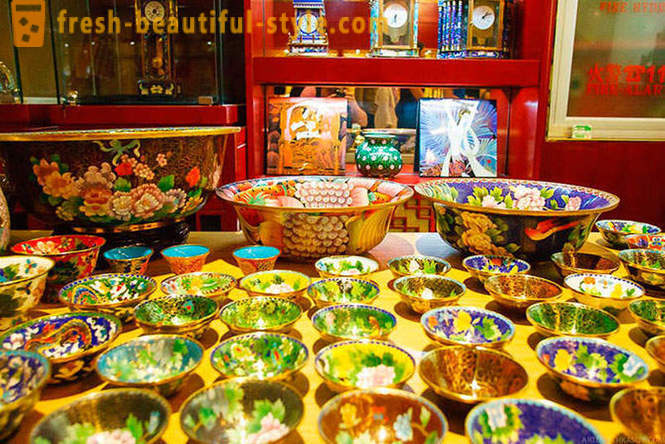
inlaid with precious stones miracle casket:
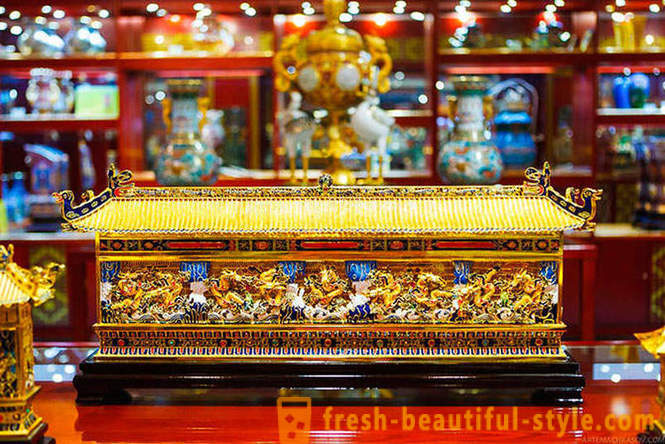
Zoom:
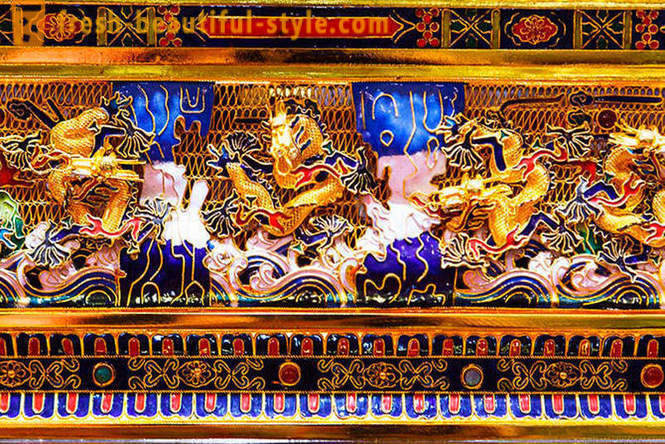
Chinese cloisonne today - is not only a tribute to tradition and an important article of China's exports. Tourists buy enamel very readily, so the case in the shop at the factory are very good.
The abundance of manual labor, the complexity and duration of the process causes a very high price by Chinese standards. The smallest vase costs no less 780 yuan - our money is about 3,800 rubles. These 20-centimeter-high, more expensive - 898 yuan, or 4,340 rubles:
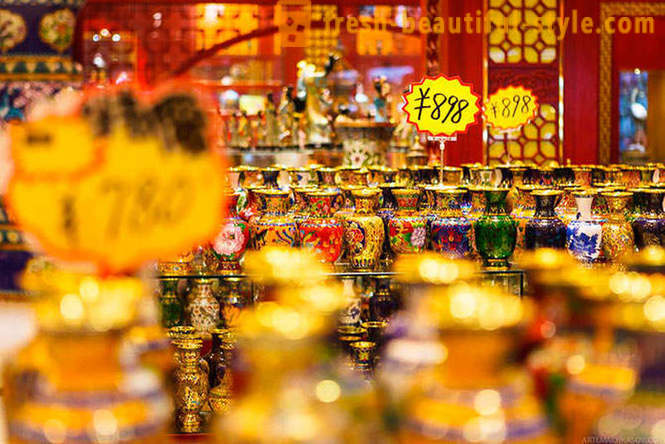
Of course, those expensive vases do not buy every day - but the tourists are willing to take pictures of the beauty, and then choose a something simpler. Nobody leaves without shopping!

One of the most inexpensive options for products with cloisonné enamel - a tiny box:
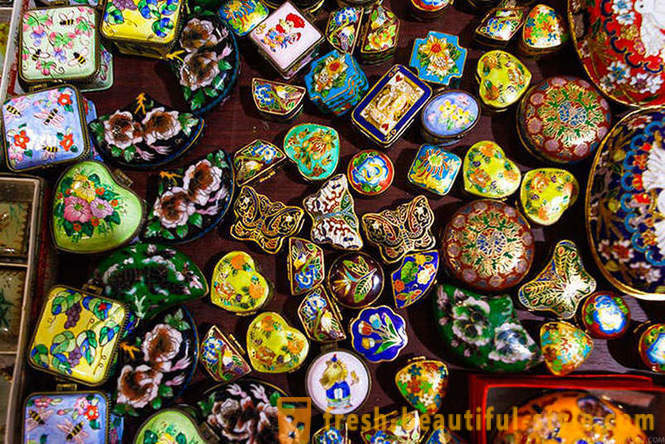
bargain in the store can not - but you can spend a lot of money very easily.
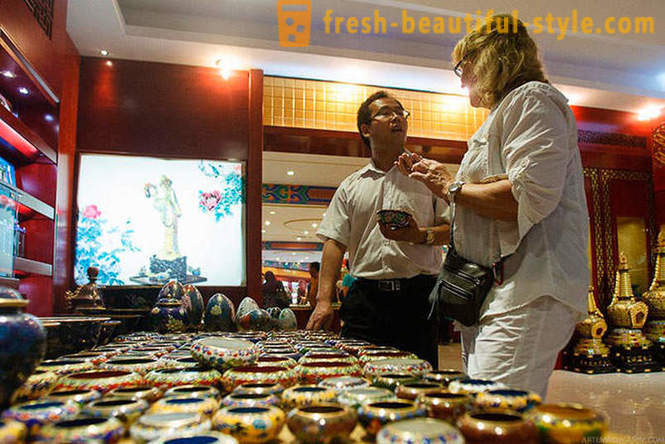
"Shikoku Shikoku?" Our Chinese escort and correspondent of Radio "Mayak" with amazement learn the price tag. This huge bowl height of 2 meters will cost 2.36 million yuan, t. E. Approximately 11.5 million rubles. But no worse than the Emperor!
